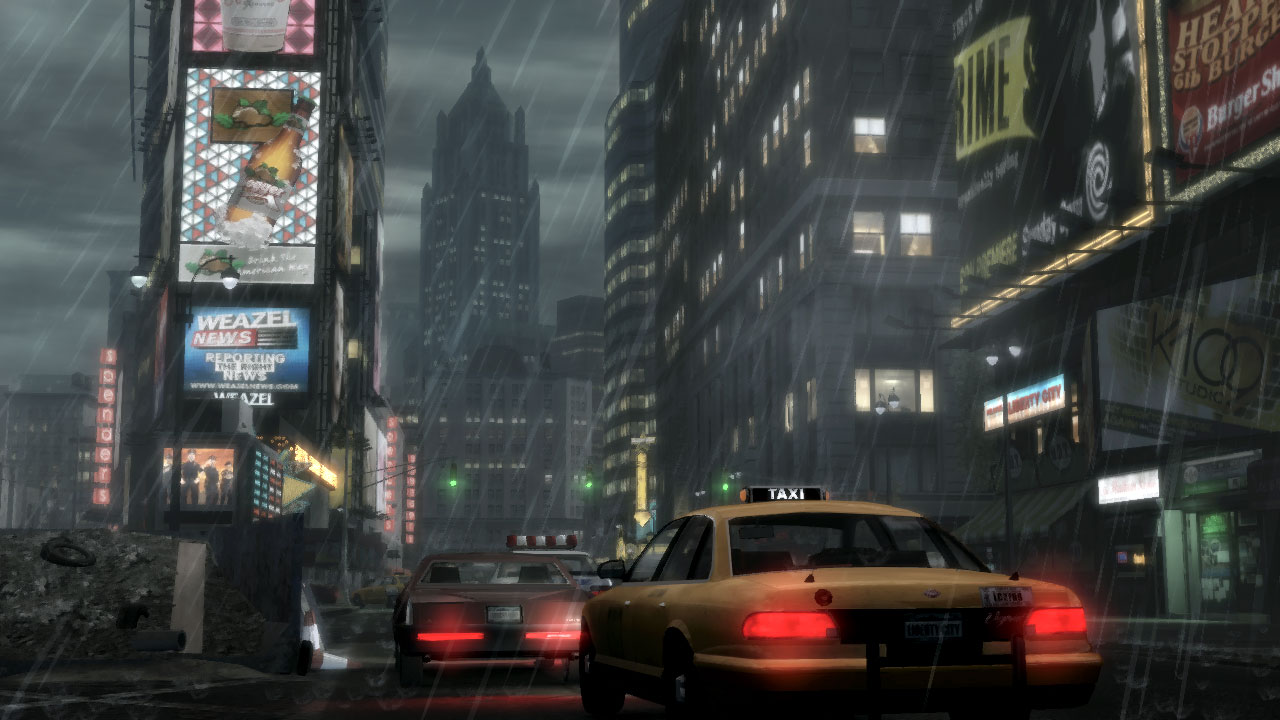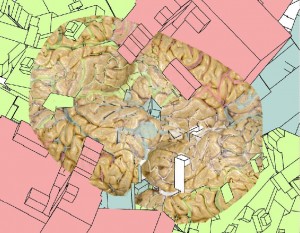The formatting is wonky- it seems to me as if WordPress is conspiring with the digital gods to selectively copy+paste my elegant formatting from Microsoft Word. In any case, consider the long block quotes as extraneous material intended to refresh the reader’s memories regarding R-13’s relationship to D-503. I’ve abbreviated their names where appropriate for brevity. Page number citations are from my edition of We except where otherwise noted by author name.
“If they fail to understand that we bring them mathematically infallible happiness, it will be our duty to compel them to be happy. But before resorting to arms, we shall try the power of words.” (1)
For Zamyatin who would be exiled for his writings, the power of words in his own life was reflected most profoundly in his writing. It permeates the structure of We, giving it frantic momentum and a locus in which to pour energy in the form of the Integral. The mathematical inclination of D-503, who decides to comply with a state directive to compose poetry/propaganda for the Integral by keeping a diary, is important when considered alongside the poetical inclinations of his friend R-13. D’s lament that “the music of assonances and rhymes” (2) are unfamiliar appears to set him firmly apart from the world of poesis. From D’s perspective, his reasoning is sound. If the One State is truly what it claims to embody: “mathematically infallible happiness” (1), then a record of life in such a perfect state should only serve to reflect its Utopian characteristics. That D’s intent should diverge so wildly from the final product is indicative of the true nature of the State. This avenue of inquiry regarding the format of D’s writing begs a further question. What is the function of the state-poet, R-13, in We?
Consider some conversation that passes between D and R:
“Fortunately, the antediluvian ages of all those Shakespeares and Dostoyevskys, or whatever you call them, are gone,” – D-503 (43)
“When R-13 entered, I was perfectly calm and normal. I spoke with sincere admiration of how splendidly he had succeeded in versifying the sentence, and told him that his trochees had been the most effective instrument of all in crushing and destroying that madman.” (60)
“It was again the old R: thick, sputtering lips, spraying saliva, and a fountain of words. ‘You see’ (‘s’-a spray) ‘… that ancient legend about paradise… Why, it’s about us, about today. Yes! Just think. Those two, in paradise, were given a choice: happiness without freedom, or freedom without happiness. There was no third alternative. Those idiots chose freedom, and what came of it? Of course, for ages afterward they longed for the chains. The chains-you understand? That’s what world sorrow was about. For ages! And only we have found the way of restoring happiness… No, wait, listen further! The ancient God and we-side by side, at the same table. Yes! We have helped God ultimately to conquer the devil- for it was he who had tempted men to break the ban and get a taste of ruinous freedom, he, the evil serpent. And we, we’ve brought down our boot over his little head, and-cr-runch! Now everything is fine-we have paradise again. Again we are as innocent and simple-hearted as Adam and Eve. No more of that confusion about good and evil. Everything is simple- heavenly, childishly simple. The Benefactor, the Machine, the Cube, the Gas Bell, the Guardians- all this is good, all this is sublime, magnificent, noble elevated, crystally pure. Because it protects our unfreedom-that is, our happiness. The ancients would begin to talk and think and break their heads-ethical, unethical.. Well, then. In short, what about such a paradisiac poem, eh? And, of course, in the most serious tone… You understand? Quite something eh?’” (62)
The nod to Dostoyevsky made by Zamyatin is not a careless one. Zamyatin is, here, consciously juxtaposing “Dostoyevsky’s eternal opposition of freedom and happiness” (Parrinder) to that of his own union of freedom and happiness- a fundamentally anti-socialist one. That D dismisses the author Dostoyevsky as an anachronism in their time while R speaks joyously of the composition of an epic poem that will espouse Dostoyevsky’s opposition is significant. In this, I find R’s role within We: to function as the ‘truth-creating’ mouthpiece of the One State when reality fails. Where necessary, R will divert his talents from the collective self-aggrandizing the One State demands in order to denounce fellow poets and ‘versify’ their death sentences. For the One State whose stability so fundamentally rests on a bed of lies (that no humans live beyond the walls of the city, the true function of the Integral as a reflexive propaganda tool, that unfreedom is the true state of happiness, etc.), it is vital that the collapse between fiction and reality be complete. In other words, poetry has become law.
When we look at the attitude of D at the beginning of the novel towards R’s suggestion that he change his career from being a mathematician to a poet, the irony of D’s development over the course of the novel becomes clear:
“Certainly, certainly! By rights, my good friend, you should not be a mathematician; you ought to be a poet! Yes! Really, why not transfer to us poets, eh? How would you like that? I can arrange it in a moment, eh?” –R-13
“I have served and will continue to serve knowledge,” I frowned –D-503
“Oh, knowledge! This knowledge of yours is only cowardice. Don’t argue, it’s true. You’re simply trying to enclose infinity behind a wall, and you are terrified to glance outside the wall. Yes! Just try and take a look, and you will shut your eyes. Yes!” –R-13
“Walls are the foundation of all human…” –D-503 (41)
It is R at the start who labels the mathematics and precise rationality of D as cowardice, but it is D at the end who unflinchingly reveals the true nature of the state through his writing. Indeed, just as R accuses D of trying to enclose infinity behind a wall with his knowledge, R himself participates in the enclosing of his fellow citizens behind walls through the use of ‘state poetry’. Zamyatin, in his juxtaposition of R-13 and D-503, is taking, at once, a cautionary and optimistic stance towards the force of writing. It is when the power of words is harnessed and domesticated solely for the state that societies such as the One State are allowed to arise. Only those who set out to write to uphold the fundamental opposition between fiction and truth can reverse the damage done. In this way, one can conceive of Zamyatin’s We as a metanovel. D, in uncovering the true nature of the One State through his writing, is embedded within and references Zamyatin’s own literary struggles against the new socialist state of his own time.
Consider what Zamyatin is doing by weaving this dialogue regarding the utility of poetry in the interest of the state into his own epic We. In this gesture of defiance towards the Communist government and their demands of their writers/propagandists, he refuses to submit his craft to the will of others. In doing so, he is exiled permanently. Just as D must inevitably and logically resist the One State by following the seemingly innocuous order he receives to glorify it if he writes literally and not figuratively about it, so too must Zamyatin inevitably resist by writing figuratively and not literally in the mode of propaganda. As Lev Lunts, one of the Serapion Brethren and writer friend of Zamyatin put it, “We reject Utilitarianism. We do not write for the sake of propaganda. Art is as real as life itself, and, as life itself, it has no goal or meaning, it exists because it must exist… Our one demand is that the writer’s voice must never be false.” (Ginsburg ix) For both D and Zamyatin, truth and fiction remain in flux relative to the societies in which they operate. What, however, remains a constant is the validity of their voices as writers. They are never false.
Works Cited
Ginsburg, Mirra. “Introduction.” Yevgeny, Zamyatin. We. New York: Avon Books, 1987. v-xx.
Parrinder, Patrick. “Patrick Parrinder-Imagining the Future: Zamyatin and Wells.” Science Fiction Studies. 22nd February 2009 <http://www.depauw.edu/SFs/backissues/1/parrinder1art.htm>.
Zamyatin, Yevgeny. We. Trans. Mirra Ginsburg. New York: Avon Books, 1987.
 par and a machine, but what is the machine producing? Diaspar is a complex system interweaving human and machine functions, what is that ultimate prize that Diaspar is heading towards? Structuralism speaks of bringing out a process, a simulacra in an object that is previously invisible. In this way, the function precedes the substance.
par and a machine, but what is the machine producing? Diaspar is a complex system interweaving human and machine functions, what is that ultimate prize that Diaspar is heading towards? Structuralism speaks of bringing out a process, a simulacra in an object that is previously invisible. In this way, the function precedes the substance. 





